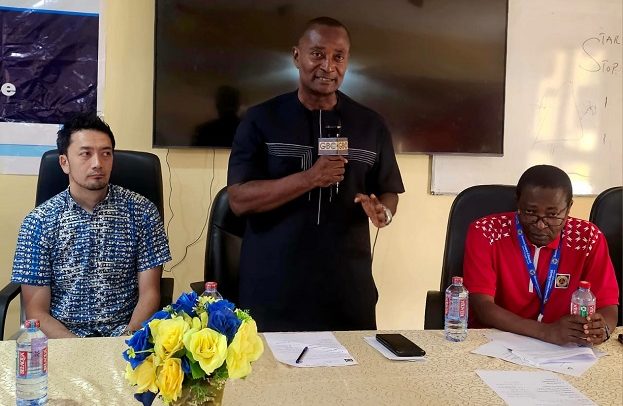
By Olusola AKANNI
Displacement and Economic Strain in West Africa
Across West Africa, internal displacement and cross border refugee movements have become enduring realities rooted in armed conflict, terrorism, environmental disasters, and governance gaps.
Nigeria alone accounts for over 3 million internally displaced persons (IDPs) and more than 85,000 refugees as of 2023 (UNHCR).
Burkina Faso has witnessed an alarming spike, with 2 million displaced due to insecurity and violent extremism (IOM, 2024). These movements are not isolated humanitarian crises; they bear profound macroeconomic consequences.
IDPs and refugees often rely heavily on aid and informal support systems, exerting pressure on overstretched public infrastructure. From health and education systems to food and housing, displacement erodes development gains.
According to the World Bank, forcibly displaced populations in Sub Saharan Africa result in an estimated 2-3% GDP loss annually due to disrupted productivity, weakened labor markets, and strained public finance.
The Cost of Inaction
West Africa’s displacement crisis is also a crisis of governance. While ECOWAS has established the Free Movement Protocol (1979) and ratified the Kampala Convention (2009), national implementation remains inconsistent.
Nigeria, Ghana, Mali, and Niger all face policy execution challenges including poor coordination, inadequate funding, and security lapses, leaving displaced populations in precarious conditions and vulnerable to radicalization or trafficking.
Furthermore, short term aid models dominate displacement response. Humanitarian funding across the region declined by 16% in 2023 (United Nations Office for the Coordination of Humanitarian Affairs, OCHA), while needs are escalating. Without long term integration frameworks, West African countries are missing an opportunity to harness displaced populations as economic contributors.
Geospatial Intelligence: A Missing Link in Migration Management
Now more than ever, West Africa needs to embrace geospatial technology and artificial intelligence (AI) to transition from reactive aid models to proactive governance.
- Early Warning and Risk Mapping:
Remote sensing and satellite imagery can forecast flooding, desertification, and armed conflict hotspots—helping policymakers anticipate displacement and pre-position resources. This was evident during the 2022 flooding across Nigeria and Benin Republic, where lack of predictive planning led to over 1.4 million people displaced (NEMA, 2023). - Camp Planning and Resource Allocation:
Geospatial data allows for dynamic tracking of IDP settlements, enabling planners to ensure equitable distribution of services. For instance, in the Lake Chad Basin, IOM deployed GIS dashboards to track displacement flows and infrastructure gaps a strategy that should be scaled across the region. - Border Surveillance and Anti-Trafficking:
AI-powered surveillance tools such as thermal imaging drones and facial recognition systems can enhance border monitoring, especially in porous corridors between Mali, Burkina Faso, and Niger. These technologies help detect irregular migration, child trafficking, and cross-border crime. - Policy Simulation and Scenario Planning:
Governments can integrate migration data with economic and climate models to simulate policy impacts. AI-driven analytics can project how refugee integration would affect host economies or how drought-induced displacement could shift urban population centers.
The Role of ECOWAS and National Governments
As a regional bloc, ECOWAS must lead the coordination of a centralized data and geospatial command hub, pooling resources from member states to monitor displacement flows and support humanitarian response.
Through public-private partnerships, ECOWAS could collaborate with African AI startups, satellite companies, and development partners to build regional capacity. Nigeria and Ghana, as regional powerhouses, must invest in national displacement data systems such as digital registries, biometric IDs for IDPs, and integration of migration variables into national planning.
Financial Imperatives
Displacement is not just a humanitarian problem; it is a fiscal challenge. Addressing the IDP crisis proactively could:
- Reduce dependency on foreign aid, freeing up domestic budgets.
- Unlock labor force participation by providing displaced youth with skills training.
- Minimize security expenditure by reducing insurgency risks through stability and integration.
- Attract foreign direct investment (FDI) from global ESG (Environmental, Social, and Governance) investors keen on migration resilient economies.
A 2023 World Bank report emphasized that countries investing in IDP integration saw a 7% increase in GDP over 5 years, mainly through enhanced labor force productivity and entrepreneurship support.
Conclusion: Toward a Resilient Migration Governance Framework
West Africa stands at a crossroads. To convert its displacement crisis into an opportunity for regional resilience, countries must prioritize evidence-based planning, geospatial innovation, and sustainable funding. Geospatial technology, when paired with political will and ECOWAS coordination, offers a transformative path forward.
The time has come to invest in people on the move not just to protect them, but to empower them to contribute meaningfully to our shared economic future.
About author:
Olusola Akanni, a migration and environmental policy expert, shares this op-ed based on over a decade of experience in migration management across West Africa. A graduate of the Migration Studies Master’s Program at the University of San Francisco, USA, and a former officer with the Nigeria Immigration Service, Olusola brings firsthand knowledge from border communities and international corridors examining human mobility trends, border surveillance systems, and humanitarian policy gaps.
The post From crisis to coordination: Leveraging remote sensing and AI to manage IDPs and refugees in West Africa appeared first on The Business & Financial Times.
Read Full Story






Facebook
Twitter
Pinterest
Instagram
Google+
YouTube
LinkedIn
RSS